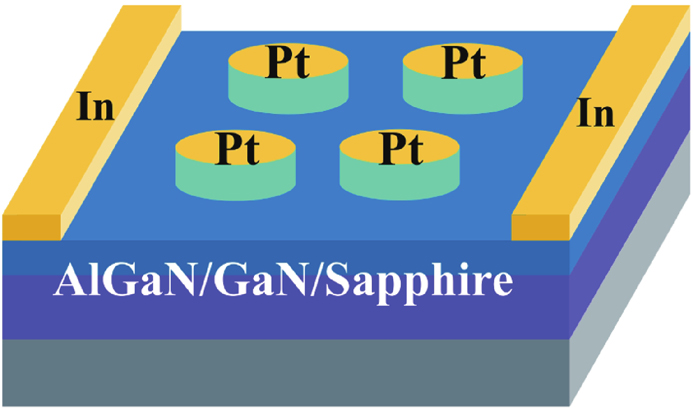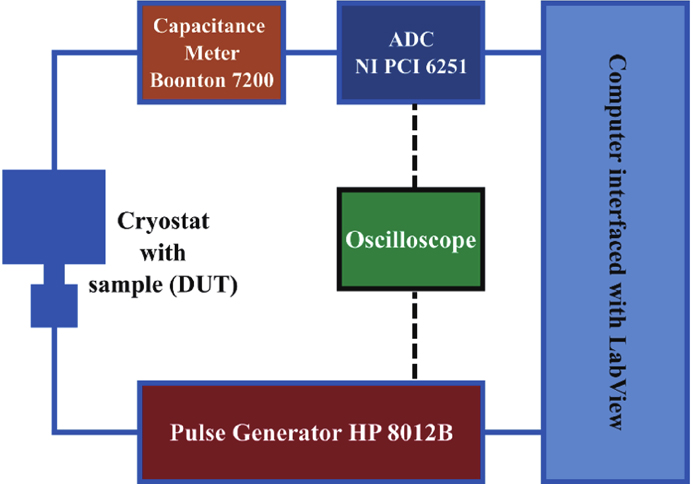Ashish Kumar, Jayjit Mukherjee, D. S. Rawal, K. Asokan, D. Kanjilal. Trap analysis on Pt-AlGaN/GaN Schottky barrier diode through deep level transient spectroscopy[J]. Journal of Semiconductors, 2023, 44(4): 042802
Search by keywords or author
- Journal of Semiconductors
- Vol. 44, Issue 4, 042802 (2023)

Fig. 1. (Color online) Schematic of the Pt-AlGaN/GaN SBD under experimentation.

Fig. 2. (Color online) DLTS setup used for the experimentation.
Fig. 3. (Color online) (a) DLTS signal for r = 2 with t1 ranging from 10–150 ms. The vertical dashed lines are the peak position as they appear in the spectra for the first instance of sampling time. The inset shows the gaussian fit with the experimental data. (b) Calculated activation energies for the two peaks as denoted by
Fig. 4. (Color online) (a) DLTS signal for r = 3 with t1 ranging from 10–200 ms. The vertical dashed lines are the peak position as they appear in the spectra for the first instance of sampling time. The inset shows the fit with the experimental data. (b) Calculated activation energies for trap peaks
Fig. 5. (Color online) (a) DLTS signal for r = 5 for t1 = 10–150 ms. The vertical dashed lines are the peak position as they appear in the spectra for the first instance of sampling time. The inset shows the fit with the experimental data. (b) Calculated activation energies for the trap peaks for r = 5 and r = 10.
Fig. 6. (Color online) Trap energy levels from DLTS for different ratios of the rate windows. The energy level corresponds to the offset from conduction band edge (EC) for electron traps and from valence band edge (EV) for hole traps.
| |||||||||||||||||||||||||||||||||||||||||||||||||||||||||||||||||||||||
Table 1. Summary of the electron and hole traps from the DLTS experimentation. Ea is the activation energy of the trap measured from the conduction (EC) or valence band (wV) edge, and NT is the trap density as calculated from the Arrhenius plots.

Set citation alerts for the article
Please enter your email address



